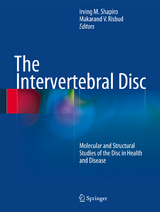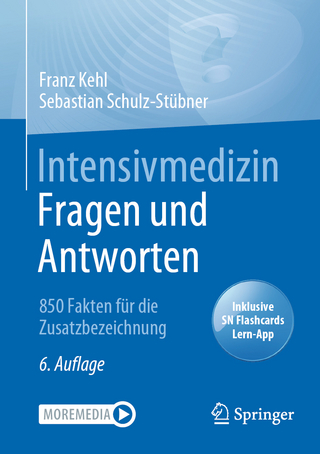The Intervertebral Disc
Springer Wien (Verlag)
978-3-7091-1534-3 (ISBN)
The intervertebral disc is a complex structure that separates opposing vertebrae, permits a wide range of motion, and accommodates high biomechanical forces. Disc degeneration leads to a loss of function and is often associated with excruciating pain.
Written by leading scientists and clinicians, the first part of the book provides a review of the basic biology of the disc in health and disease. The second part considers strategies to mitigate the effects of disc degeneration and discusses the possibility of engineering replacement tissues. The final section is devoted to approaches to model normal development and elucidate the pathogenesis of degenerative disc disease using animal, organ and cell culture techniques.
The book bridges the gap between the basic and clinical sciences; the target audience includes basic scientists, orthopaedists and neurologists, while at the same time appealing to the needs of graduate students, medical students, interns and fellows.
Irving M. Shapiro BDS, PhDMakarand Risbud, Ph.D.Division of Orthopaedic Research, Jefferson Medical College, Thomas Jefferson University, Philadelphia, PA, USA
Biomechanical and Molecular Studies of the Intervertebral Disc: Introduction to the Structure, Function and Comparative Anatomy of the Vertebrae and the Intervertebral Disc.- The Intervertebral Disc: Overview of Disc Mechanics.- Development of the Intervertebral Disc.- Proteoglycans of the Intervertebral Disc.- Collagen and Other Proteins of the Nucleus Pulposus, Annulus Fibrosus and Cartilage Endplates.- Microenvironmental Regulation of Cell Function and Extracellular Matrix Synthesis by Disc Cells.- The Effects of Mechanical Forces on Nucleus and Annulus Cells.- The Role of the ADAMTS Proteins in the Intervertebral Disc.- Intervertebral Disc Disease: Pathogenesis and Current Treatment Modalities: Epidemiology of Lumbar Disc Degeneration.- Genetic Basis of Intervertebral Disc Degeneration.- Pathogenesis of Intervertebral Disc Degeneration.- Imaging Modalities for Studying Disc Pathology.- Surgical Indications for Lumbar Degenerative Disease.- Spinal Motion Restoration Devices for the Degenerate Disc.- The Non-Surgical Treatment of Back Pain.- Back Pain and Disc Degeneration: Are They Linked?- Clinical Features and Pathobiology of Chordoma.- Models of Disc Disease and Biological Regeneration: Large Animal Models of Disc Degeneration.- Intervertebral Disc Herniation.- The Sand Rat (Psammomys obesus obesus) Model of Spontaneous, Age-Related Intervertebral Disc Generation.- Use of Knockout and Transgenic Mouse Models in Disc Research.- Intervertebral Disc Culture Models and Their Applications to Study Pathogenesis and Repair.- Use of Stem Cells to Regenerate the Disc.- Gene Therapy Approaches for Disc Regeneration.- Enhancing Disc Repair by Growth Factors and Other Modalities.- Tissue Engineering of the Disc.
| Erscheint lt. Verlag | 13.9.2013 |
|---|---|
| Zusatzinfo | X, 446 p. 130 illus., 42 illus. in color. |
| Verlagsort | Vienna |
| Sprache | englisch |
| Maße | 210 x 279 mm |
| Gewicht | 1385 g |
| Themenwelt | Medizinische Fachgebiete ► Chirurgie ► Neurochirurgie |
| Medizinische Fachgebiete ► Chirurgie ► Unfallchirurgie / Orthopädie | |
| Schlagworte | Back pain • degenerative disc disease • disc degeneration • Intervertebral Disc |
| ISBN-10 | 3-7091-1534-5 / 3709115345 |
| ISBN-13 | 978-3-7091-1534-3 / 9783709115343 |
| Zustand | Neuware |
| Informationen gemäß Produktsicherheitsverordnung (GPSR) | |
| Haben Sie eine Frage zum Produkt? |
aus dem Bereich




